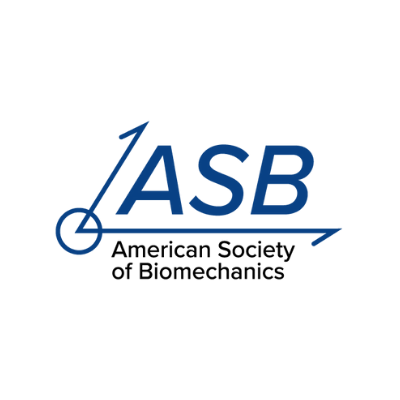
International Women in Biomechanics
@IntWomenBiomech
Followers
3K
Following
3K
Media
422
Statuses
3K
IWB is a peer support group for women, non-binary, and gender non-conforming individuals in biomechanics. If you want to join us, visit our website.
Joined July 2020
🚨BIG ANNOUNCEMENT🚨 We're thrilled to launch our new IWB website and membership portal! Our new website offers members a means to exchange information, foster connections, and promote gender equity in the field of biomechanics. https://t.co/6YuAM4If0F
1
22
50
Part 5/5 of our AI blog series it now published! Continuing our discussion from our March monthly meeting, we discuss points of ethical concern and limitations to using generative AI in the classroom. https://t.co/Qxz7nNcjXS
intwomenbiomech.org
Continuing our discussion from our March monthly meeting, we discuss points of ethical concern and limitations to using generative AI in the classroom.
0
0
0
💡 New Blog! Continuing our discussion from our March monthly meeting, we discuss points of ethical concern and limitations to using generative AI for personal applications and everyday use. Read it here:
intwomenbiomech.org
Continuing our discussion from our March monthly meeting, we discuss points of ethical concern and limitations to using generative AI for personal applications and everyday use.
0
0
0
IWB Members: Curious about different career paths? Join us for a panel exploring careers beyond research. We'll hear from women who work in sales, consulting, scientific writing, and more. 📅 Wednesday, October 8th 🕐 5pm New York (10pm London, Thurs Oct 9th 7am Brisbane)
0
1
1
@shreyakotha99’s ultimate biomechanics research goal is to develop assistive devices that learn from wearable data and restore motor control, driven by a fascination with the body’s ability to adapt, heal, and relearn movement after injury💪 🧵13/13
0
0
0
The authors would like to thank Samuel Mosiman, Dr. Michelle Ciucci and Dr. Dave O’Connor on the @UWMadison, @NSF and @NIH 🧵12/13
1
0
0
What she learned: science rarely hands you clean wins, but persistence pays off. This study revealed that wave speed reflects not just stiffness, but microstructural damage too. Its link to effective density opens new doors for measuring tendon loading at small scales. 🧵11/13
1
0
0
Fun fact: A big part of this project was figuring things out along the way. One unforgettable moment? Seeing real microdamage appear in SHG images. It sparked the idea that, with continuous imaging + tensiometry, we might one day track tendon fatigue as it happens. 🧵10/13
1
0
0
🎯 This study supports using shear wave speed as a robust, noninvasive metric of both stress and fatigue-related changes in tissue mechanical properties. It captures structural deterioration well before visible failure! 🧵9/13
1
0
0
🔎Curious finding: at fixed stress levels, significant increases in wave speed. 💡Why? Microdamage may have elevated the stress on intact structures. ✅ Since wave speed is measured noninvasively, it’s a promising tool for tracking tendon fatigue. 🧵8/13
1
0
0
The team used Second Harmonic Generation (SHG) imaging to confirm structural damage like: ⚠️ Kinked fibers ⚠️ Collagen denaturation ⚠️ Spacing between fibers 🧵7/13
1
0
0
The results show that with fatigue: 🔻Elastic modulus ⬇️ 30% 🔻Max stress ⬇️ 40% 🔻Effective density of the fascicles ⬇️ 20% ⚠️ These mechanical declines reflect progressive microdamage and functional weakening of the tendon structure! 🧵6/13
1
0
0
The relationship between fascicle wave speed and axial stress was predicted by a tensioned beam model: the stiffer or more stressed the tissue, the faster waves move! 📈 🧵5/13
1
0
0
#Shearwave speeds were measured in rat 🐭 tail tendon fascicles subjected to fatigue loading (0-5% strain @ 0.5 Hz). A small mechanical tap every 30 cycles generated waves, tracked by laser vibrometers to see how wave speed changed with damage 🧵4/13
1
0
0
The objectives of the study were: (1) to evaluate if a tensioned beam model could describe wave propagation in tendon fascicles (2)to determine if #shearwave speed tracks fatigue-related changes in fascicle mechanical behavior 🧵3/13
1
0
0
💡Study Motivation: #Tendoninjuries often begin with microscopic damage long before symptoms appear. 🔎 Can we detect that early damage noninvasively? 🧵2/13
1
0
0
New #IWB_QuarterlyPaper! ✨ This time we spotlight the work of @shreyakotha99 on how shear wave propagation can reveal tendon fatigue and microdamage. #tendonresearch Link: https://t.co/8q5L0UHgrN
1
0
0
⏳ Just 7 days left! Submit your session proposal for #WCB2026 and be part of the world’s largest biomechanics gathering 🌍💡 🗓️ Deadline: Sept 30 📢 Submit your proposal today: https://t.co/Uq0HJDRUyx
#WCB2026 #Biomechanics #Innovation
0
1
0
‼️NEW‼️ Research opportunity for endurance athlete enrolled in an upcoming endurance event. Consider participating in this brief survey assessing health, training, and performance. Access the survey here or by scanning the QR code below: https://t.co/uqVcDvyZkH Please share!
0
15
13
I'm recruiting a PhD student to join the lab at @GeorgiaTech in Fall 2026! Broad taxonomic and topical freedom under the umbrella of vertebrate joint form and function. Information here: https://t.co/9OcmKYrOLe – please share 🦴🩻
manafzadeh.com
Homepage for The Manafzadeh Lab at Georgia Tech
✨Some news✨: after finishing my postdoc, I’ll be starting my lab as an Assistant Professor at @GeorgiaTech. Join us in Atlanta to study how joints work and where they come from!
4
43
67
Reminder: Meeting tomorrow! DM for the link to register. See you all there!
0
2
0




